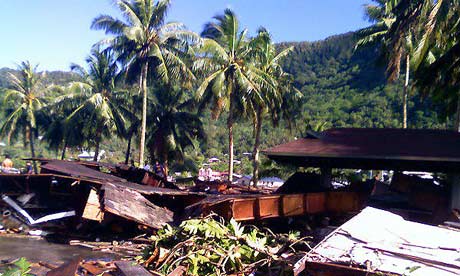
The tsunami that killed dozens of people in the Pacific islands of Samoa and American Samoa, and sent smaller waves to the east coast of Japan almost 5,000 miles away, was caused by a huge subsea earthquake.
A tsunami – literally "harbour wave" in Japanese – is typically caused by seismic activity under the seafloor that sends fast-travelling waves to shore, sometimes with devastating consequences.
A powerful, shallow earthquake occurring under the sea can create waves that move at speeds of up to 500-600 miles per hour. As they approach the shore, the waves, though almost imperceptible in the open sea, slow and swell to heights of 10 metres or more.
While ordinary sea waves involve only the top layer of water, tsunamis comprise entire columns of water stretching to the ocean floor. They can travel several hundred miles, and the most powerful across entire oceans.
The use of "tidal wave" to describe tsunami has fallen out of favour: tsunami are not caused by tidal movements. Aside from earthquakes, they can be caused by volcanic eruptions, underwater explosions, landslides and other factors.
Experts believe major tsunamis occur every 10 years. Historically, almost 60% have occurred in the Pacific ocean, 25% in the Mediterranean and 12% in the Atlantic. The Indian ocean, scene of a huge tsunami that killed 230,000 people in 12 countries in December 2004, accounts for only 4% of recorded major tsunamis.
The largest recorded earthquake, of magnitude 9.5, which struck Chile in 1960, generated tsunamis that killed people as far away as Hawaii and Japan.
Not all tsunamis involve giant waves, however. The waves that reached the Japanese island of Hachijojima today, 10 hours after the earthquake, were described as "very weak" by the country's meteorological agency.
0 comments:
Post a Comment